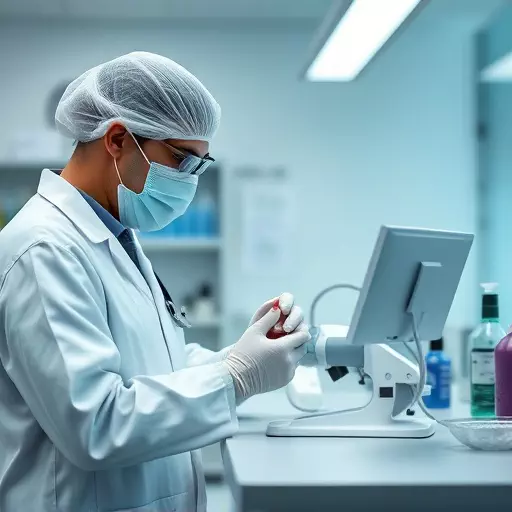Advanced lab work in Toledo utilizes cutting-edge tools like automated cell counters and laser technology to measure Red Cell Distribution Width (RDW), aiding in anemia evaluations. Cytology, through microscopic examination of cellular specimens, detects precancerous cells early, while tumor gene profiling analyzes genetic mutations to guide targeted cancer therapy. Integrating these advanced techniques significantly improves diagnostic accuracy and enables personalized, effective treatment plans in Toledo and beyond.
In the realm of medical diagnostics, monitoring Red Cell Distribution Width (RCDW) is a crucial aspect of anemia evaluations. This article delves into the significance of RCDW as a key metric, exploring its role in understanding and managing anemia effectively. We discuss the process of monitoring RCDW in clinical settings, highlighting essential tools and techniques employed by healthcare professionals at lab work centers in Toledo. Additionally, we examine how cytology and tumor gene profiling integrate to foster comprehensive cancer care, emphasizing their collective impact on targeted therapy and detecting precancerous cells.
- Understanding Red Cell Distribution Width: A Key Metric in Anemia Evaluations
- The Process of Monitoring RCDW in Clinical Settings: Tools and Techniques
- Integrating Cytology and Tumor Gene Profiling for Comprehensive Cancer Care
Understanding Red Cell Distribution Width: A Key Metric in Anemia Evaluations

Red Cell Distribution Width (RDW), a crucial metric in anemia evaluations, offers vital insights into the size and variability of red blood cells. Measuring RDW involves analyzing a small sample of blood during routine lab work in Toledo or elsewhere. This simple procedure provides critical information that helps diagnose and differentiate various types of anemia. For instance, elevated RDW can indicate macrocytic anemia, where red cells are larger than normal, while reduced RDW might suggest microcytic anemia, characterized by smaller-than-average red blood cells.
In the context of cancer treatment, understanding RDW gains added significance. Tumor gene profiling plays a pivotal role in targeted cancer therapy, where specific genetic mutations drive treatment decisions. Cytology, the study of cell structure and function, assists in detecting precancerous cells early through microscopic examination. Integrating RDW measurements with these advanced diagnostic tools enables healthcare professionals to make more informed choices, ensuring personalized and effective care for patients facing anemia or cancer.
The Process of Monitoring RCDW in Clinical Settings: Tools and Techniques

In clinical settings, Monitoring Red Cell Distribution Width (RCDW) involves advanced lab work in Toledo and beyond. This process utilizes sophisticated tools like automated cell counters equipped with laser technology to precisely measure the variation in red blood cell sizes. By analyzing the RCDW, healthcare professionals gain crucial insights into anemia evaluations, identifying not just the presence but also the severity of anemia. These devices offer rapid, accurate results, enabling doctors to make informed decisions promptly.
Cytology plays a pivotal role in this process, assisting in detecting precancerous cells and even tumor gene profiling for targeted cancer therapy. Integrating these techniques enhances diagnostic capabilities, ensuring comprehensive evaluation. This method aligns with the evolving landscape of medical science, where advanced lab work empowers healthcare providers to deliver personalized treatment plans based on precise data.
Integrating Cytology and Tumor Gene Profiling for Comprehensive Cancer Care

In the comprehensive care of cancer patients, integrating lab work like cytology and tumor gene profiling is revolutionary. Cytology, the study of cell structure and function, plays a pivotal role in detecting precancerous cells and identifying early signs of malignancy. By examining cellular specimens under a microscope, cytologists can uncover anomalies indicative of potential tumors, enabling timely intervention. This is particularly crucial in regions like Toledo, where access to advanced lab work can significantly impact patient outcomes.
Tumor gene profiling, on the other hand, involves analyzing the genetic makeup of tumors to guide targeted cancer therapy. By understanding the specific mutations and alterations driving tumor growth, doctors can prescribe personalized treatments that are more effective and have fewer side effects. The role of tumor gene profiling in targeted cancer therapy is invaluable, ensuring that each patient receives tailored care based on their unique genetic landscape. This integrated approach combines the power of cytology’s diagnostic accuracy with the precision of tumor gene profiling, marking a significant advancement in cancer management.
